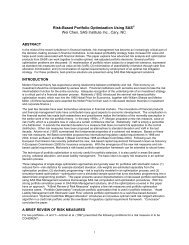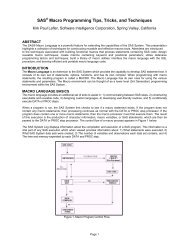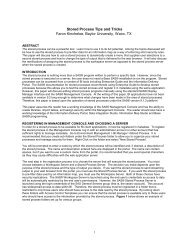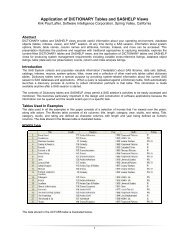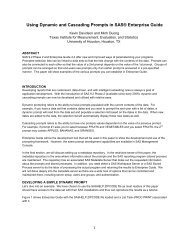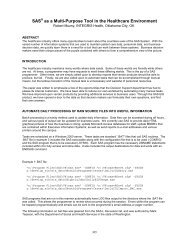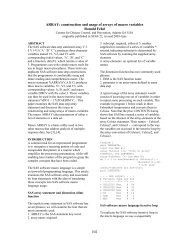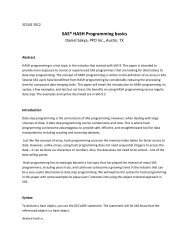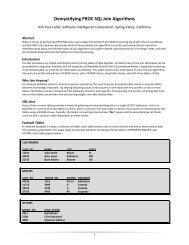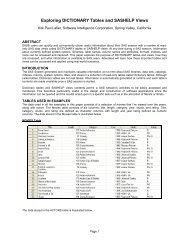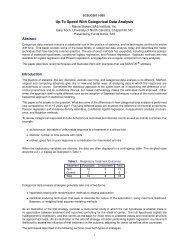Coding ICD-9 and Charlson Index Scores in R for SAS Users ...
Coding ICD-9 and Charlson Index Scores in R for SAS Users ...
Coding ICD-9 and Charlson Index Scores in R for SAS Users ...
You also want an ePaper? Increase the reach of your titles
YUMPU automatically turns print PDFs into web optimized ePapers that Google loves.
• Use the cast function <strong>in</strong> the Reshape package to transpose the data by Patient ID.<br />
• Replace any disease category count over 1 with a 1 to <strong>in</strong>dicate presence. Note, the<br />
number of times a disease is recorded is not important <strong>in</strong> scor<strong>in</strong>g the <strong>Charlson</strong> <strong>Index</strong>.<br />
• Assign appropriate weights per disease category.<br />
• Compute a comorbidity count <strong>for</strong> each patient.<br />
• Compute the <strong>Charlson</strong> <strong>Index</strong> <strong>for</strong> each patient.<br />
• Return the f<strong>in</strong>al dataset.<br />
The beg<strong>in</strong>n<strong>in</strong>g of the program classifies each <strong>ICD</strong>-9 code to the correspond<strong>in</strong>g disease category<br />
<strong>for</strong> the <strong>Charlson</strong>. The data are then transposed by patient so that across each patient row we can<br />
see which of the disease categories are present. Then a count of comorbidities <strong>and</strong> the <strong>Charlson</strong><br />
<strong>Index</strong> is calculated.<br />
Portion of sample <strong>in</strong>put data:



